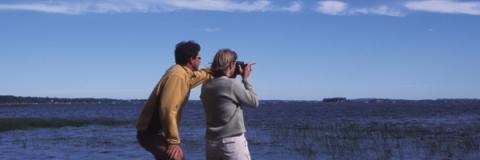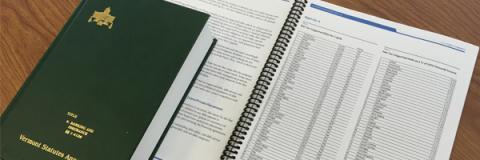Overview:
Treasurer Mike Pieciak has announced a proposal to eliminate up to $100 million in medical debt using a one-time investment of $1 million. Further, the proposal would protect Vermonters' credit scores by eliminating the reporting of medical debt to credit agencies.
At a time when health care costs are soaring in Vermont, the medical debt relief proposal would provide immediate, life-changing relief to thousands of Vermonters, lowering costs and and giving people the freedom to invest in their futures.
FAQ:
How does the medical debt relief program work?
Using a one-time investment of $1 million, the program would erase up to $100 million of medical debt—relieving financial burdens for approximately 60,000 Vermonters.
The State Treasurer’s Office would partner with Undue Medical Debt, a nonprofit organization, to acquire and eliminate qualifying medical debt held by low- and middle-income Vermonters.
Undue Medical Debt will negotiate with health care providers across the state to purchase eligible medical debt at pennies on the dollar of its original cost. Once acquired, the debt will be completely forgiven and any negative impacts to the debtor’s credit report will be removed.
Why eliminate medical debt?
Medical debt is a unique form of consumer debt. Unlike credit card purchases or loans, medical expenses are often unpredictable and unavoidable. Patients rarely know the cost of care upfront and have little to no control over whether they incur the debt.
We’re all just one health crisis away from being hit with medical debt, and that debt can linger for years, dragging down credit scores and making it more expensive to buy a home, start a business, and build wealth.
Medical debt is both a financial burden and a public health issue. People with unpaid medical debt are more likely to put off seeking the care they need due to fear of punishment, which can worsen their health, lead to more expensive care in the future, or put them out of work.
Medical debt is also linked to stress, anxiety, and shame, which can lead to higher risks of health issues. Relieving the burden of medical debt will help Vermonters focus on making the best decisions for their health, not their finances.
More than 1 in 10 adult Vermonters carry medical debt, and across the U.S., medical debt is the leading cause of bankruptcy. At a time when health care costs are soaring, and Vermont faces an affordability crisis, our proposal would provide immediate, life-changing relief to thousands of Vermonters.
Who is eligible for the program?
Vermont residents may qualify for medical debt forgiveness if they:
-
Have debts in “terminal bad debt status” (i.e., debts deemed uncollectible by medical providers).
-
Meet one of the following financial criteria:
- Belong to a household at or below 400% of the Federal Poverty Level (currently $60,240 for an individual, $124,800 for a family of four).
-
Have medical debt that equals or exceeds 5% of their household income.
What’s the cost to taxpayers?
The program will not require any new taxes, fees, or additional costs to taxpayers. The proposed funding source uses existing resources previously allocated to the State Treasurer’s Office.
Is there a maximum amount of medical debt that can be forgiven for an individual?
No. There is no cap on the amount of eligible debt that can be eliminated for an individual.
Do I need to apply for the program?
No. Eligible Vermont residents will be enrolled automatically—no applications, no forms, no hassle. Once their medical debt has been forgiven, Undue Medical Debt will notify the individual by mail.
Who is Undue Medical Debt?
Undue Medical Debt (formerly RIP Medical Debt) is a national nonprofit dedicated to eliminating medical debt. Since 2014, they have worked with private donors and state, local, and county governments to forgive over $14.8 billion of medical debt across the U.S.
Which healthcare providers are participating in the medical debt relief program?
Any healthcare provider that holds medical debt owed by a Vermont resident can choose to participate in the Medical Debt Relief Program. However, participation is voluntary, and not all providers may opt in.
Even if an individual meets the eligibility criteria, their medical debt can only be forgiven if the provider agrees to sell the debt to the program. If a provider chooses not to participate, the state will be unable to cancel that specific debt.
If the medical debt targeted by this program is already considered uncollectible, why should the State step in to eliminate it?
It is correct that the debt that is eligible to be forgiven under the proposal has been deemed to be in “terminal bad debt status” and uncollectible. However, medical debt impacts borrowers even if a provider has stopped trying to collect it.
Medical debt can still damage credit scores, cause stress, and discourage people from seeking necessary care. Those burdened by medical debt face a higher risk of bankruptcy. By eliminating this debt, the program will provide real financial relief and help improve health outcomes for Vermonters.
Media:
Vermont Public - Elected officials want to wipe out Vermonters' medical debt using state funds
Seven Days - State Treasurer Pieciak Proposes Medical Debt Relief Program
VT Digger - Mike Pieciak: Medical debt relief is a direct investment in Vermonters
NBC5 - New program could erase medical debt for thousands of Vermonters
WCAX / 802 News - Treasurer Mike Pieciak wants to make your medical debt disappear
ABC22 - VT lawmakers' bill could free thousands from medical debt
Resources:
S.27 - An act relating to medical debt relief and excluding medical debt from credit reports





